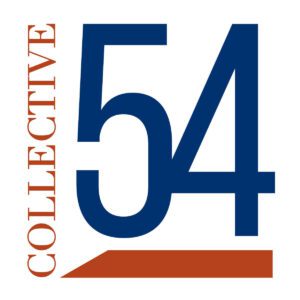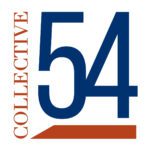In this session, we peel back the layers on how a seasoned ERP implementation consulting firm revolutionized its business model, moving from the traditional time and materials approach to a groundbreaking fixed fee structure. Discover the strategic decisions that led to this bold shift, the challenges overcome along the way, and the significant impact it had on their competitive edge and profit margins. Tune in to witness a story of adaptation, resilience, and success that could redefine the way you think about how you monetize your expertise.
TRANSCRIPT
Greg Alexander [00:00:00] Hey, everybody, this is Greg Alexander, the host of the Pro Serv podcast, brought to you by Collective 54, the first community for founders of boutique professional services firms. And on this episode, we’re going to talk about how a consulting firm who’s been around a long time using the traditional time materials billing method, has recently switched to a fixed bid approach. And this firm is in the middle of this transition, which is what makes this case study so unique, because there’s lots of early findings and learnings and lots of motivations. And we’re going to jump into all of that. And I hope at the end of this, you’re all inspired by this story and you consider making a similar journey. And then for the members that are listening to this, of course, you can attend the Q&A session with Alan and we’ll get into much greater detail. But with that, let me bring in our guest. Alan, it’s good to see you. Would you please introduce yourself and your firm to the audience?
Alan Wyne [00:01:17] Sure. So, Alan Wyne, CEO of Anovia consulting. We’ve been around about 40 plus years. We do ERP implementations and a very specific part of the market from a Microsoft product standpoint. We we do business central and it’s small to medium sized business, even though we’ve scaled that quite large for some companies. You know, most of our stuff is DNA at this point in time and materials and, you know, it’s we’ve had a good journey, but it’s the market’s changing. Everything is changing around us. And we know we’ve got to get the fixed fee to really get our profits growing the way we would like them to grow.
Greg Alexander [00:01:58] So let’s dive on to that. It’s unusual for me to talk to a firm. It’s been around for 40 years, and it’s had all the success that you’ve had. Be willing to make this change because let’s face it, what you’ve been doing before worked. So what was the motivation to go from timing materials to fixed fee?
Alan Wyne [00:02:18] You know, it was really a couple of things. The first was we were looking for a new competitive advantage, you know, because because it is a I wouldn’t say it’s a commodity market, but it knocks on that door quite a bit when you’re doing implementations and Ram limitations. And Microsoft on this particular product move from an on prem version. So it was never in the vision and they changed the name and they went to a fully SAS version. You can still put it on prem, but but really what everybody had been software as a service up in the cloud. And that also meant that the revenue I generated about every five years for upgrades, which was significant, or the product sales I was making when we were selling it on prem, is completely going away because the upgrades now happen every six months automatically, and our service numbers while still growing. It’s just a market that’s going to go away in ten years. So how do I how do I and we sold it as time and materials. So how do I get into a market that I’ve already and ironically and become the competitive advantage. And it is most of my competition this TNM, we wanted to say look we’ll do fixed fee on. The one final point also is while there are fixed fee companies out there for our product that we sell with Microsoft, they do small fixed fees, 75 $100,000. We and we do a lot of those small companies, but we do an awful lot of large ones, meaning 250, 500, $1 million implementations of software. Nobody wants to touch that with a ten foot pole, because they don’t have the processes and the discipline to do it. We think that’s a huge competitive advantage. So hence the change to stay up with the market.
Greg Alexander [00:04:08] Yeah okay. Fantastic. So the the on prem the SAS movement within the Microsoft ecosystem was the stimulant. You are competing with in a mature market with the fixed fee model as a way to separate because and for those that are listening that might not be familiar with this, when somebody like Alan goes to fixed fee, the client is shifting the risk from themselves to the implementer, and that’s what’s in it for the client. Now, what’s in it for Alan is if you really know what you’re doing, you can control the risk. And this could turn out to be very profitable. And maybe you win some business that you wouldn’t have won otherwise because you’re willing to do this and your competitors are not. So that’s kind of the context behind this. So, Alan, when you were thinking about it, what I loved about your story and thank you for sending me this great note, is you’ve taken a very methodical, approach to it. You didn’t just flip the switch and say, okay, everything’s going to fix me. You kind of doing it in phases. So tell us what your your migration path looks like.
Alan Wyne [00:05:11] So it’s it’s a two year migration path for us. Prior to this year we had already had some fixed fee engagements. So we had what are called planning engagements, which we go in beforehand, look at the customer and go, okay, now we can quote this properly because we understand your business. And those were fixed fee engagements and we had a few other offerings that were fixed fee. We also though a year, two years ago we had spent ten years selling block hours. So blocks of hours. So I’m getting all this money upfront, but then I’m using it, right. We’re using it through the system. And we got away from that and we got much more to what I build. I got collected in the next week or two. And so my cash flow had already changed, and we had gotten a consistent cash flow and not these big chunks. That’s important in fixed fee because you’re going to be billing monthly or however however you’re going to do it. In our case, we’ve decided we’re going to go monthly bills and with a a calculus for it. But you know, we also said, all right, we’re going to practice with our existing, fixed fee engagements, get better at change orders, which are absolutely vital to making this successful, get better at changing the way we bonus our team, because today we bonus our team. On how many billable hours did you generate? Well, I got a fixed fee. My goal is to generate as few billable hours as I can with the same amount of ultimate money that I’m going to charge the customer, and it’s it’s contradictory. Today it it isn’t. Tomorrow it will be if I don’t change that. So so we’re changing how we bonus these existing fixed fees and they’re small. So I can’t get hurt on them right now. If I screw on up that’s okay. It’s not that big of a bite and I can handle it. I screw up $1 million. The TV is slightly different, so I want to be good before I get there. And then finally, you know, we’re spending time reevaluating our processes and procedures not only in our delivery and operations, but in our sales department. How do we go to market with this? How do we get competitive with it? How do we bonus our salespeople? Because again, it was based on what did you sell and how many hours and what was the rate. Because I to then be honest on how good my rate per hour was. And so there’s, there’s several pieces of this that we’re trying to say, look, you know, I made this statement to my team in November last year. In two years, I want to be 80% fixed fee. All across the board. I’d like it faster and more, but I figured two years was a good a good runway. 80% was an acceptable number to get us started on what effectively is a, you know, a five year journey to get completely over to it.
Greg Alexander [00:07:58] Yeah. You know, a couple things you’ve mentioned there I want to call on because there it’s a real case study. And these two particular issues changing the measurement system from from number of billable hours and then changing the sales incentive system, you know, to incent selling fixed fees versus a traditional way culturally, especially for a 40 year old company. These are massive changes. I mean, these are not incremental moves. So how did the let’s start with the delivery staff first? You know, the folks that are doing the work for the client, how did they receive it?
Alan Wyne [00:08:33] They’re receiving it. Okay. We’re still working through it completely. You know, same with sales. I mean, this is, you know, we’re I would say we’re in the first 20 to 25% of this journey, but, you know, it’s it’s discussion. And we’ve actually brought certain people in from each department to go look at this. This is coming that the company knows we’re going to actually across the board, I’ve announced it. We talked about it every month at our staff meeting. Certain people we’ve started bringing in and going, how do we structure this bonus program for delivery? It’s I need done faster, better, cleaner. And then I’m going to incentivize you on the profitability of the project. And so this team and we work in teams. So we’re structured okay. To be able to do this with sales. It’s the same way. How did you sell it. What price did you put on it. And then I’m going this back into what was it. How many hours do I think that’s going to take. And what was my real net realized. Right. So our internals are focused on still billable hours even though we’re not building per hour. So utilization and profitability and rate to the customer, we just look at them and go, look, it’s going to be $135,000. And when they go today, we get a little bit, well, wait a minute, what’s my rate? Why do you care. There’s no right here. This is just this is what it costs. Dude, are you happy? And we actually had a successful one with that. That wasn’t one of our pre offerings. And I actually got $15 more an hour rate and probably 100 extra hours than what it would really take, because the customer was perfectly happy with the final fixed fee number. I did. You know, that’s profitability.
Greg Alexander [00:10:12] Yeah. I mean, the customers love it because what they don’t want to do is get surprised. Right? So the the comfort level of a fixed fee is they don’t have a runaway project on their hands, you know, and their budget gets blown to heck. And they, you know, sometimes they get egg in their face. God forbid they lose their job. So the customers love it. I find that the sales guys sometimes don’t like it because it creates it creates yet another thing they have to deal with with the customer, but feel like the example that you just mentioned, you know, the customer wants to get granular, particularly procurement department, and say, yeah, but what’s your rate? So how did you how did you train the sales team around this new selling motion and how to address the the new objections that certainly came up.
Alan Wyne [00:10:56] You know, I mean, the beauty of having sold some fixed fee projects or planning engagements and other things. Having those people already sell that they’ve kind of run into those objections and they’ve learned how not. They’ve learned how to say what to say and what not to say. And so we sell based on look, the quality of our work speaks for itself. You’re going to get this, you know, here’s what you’re going to end up with. Here’s the documentation. The planning engagement is going to give you. We’re just translating that into when you you know, when it go live, you’re going to have a fully functional system. Here’s all the things it’s going to do. Here’s the statement of work and here’s the work plan, guys. Here’s all the tasks that are going to happen. And, you know, tell me that somebody else in my industry is going to walk up and say, yeah, for a half $1 million. We guarantee that they don’t exist. So they’ve, they’ve we’re we’re slowly learning and playing training on how to get that going. And then just, you know, getting our getting our nose bloodied every once in a while. But basically practice it’s practice practice practice. It’s really what it is. Okay.
Greg Alexander [00:12:05] Well we try to keep these podcast short to 15 minutes and then we’ll, we’ll we’ll do a deep dive in this in the member course. I got one more question for you. What has surprised you? So you’re in the first 25% of rolling this out. You this is a multi-year journey. You know what happened that you didn’t anticipate. If anything.
Alan Wyne [00:12:26] I didn’t I didn’t dissipate the acceptance of the company quite so fast where everybody was just like, yeah, okay, good. Let’s go. And I was I thought I’d have to bring some people kicking and screaming, you know, and, and in reality, from leadership down, everybody is just. And this sounds like a great idea. And I think it’s because we pitched it as look the next the market’s changing. We’ve all seen it. We change the way we modify the software. We don’t have a ten year journey here guys that protects us and grows it. And ultimately a job business. You know businesses primary focus is profitability. So I can bonus and pay you guys better. Can we all be together. And so that that’s been that’s been the real pleasant surprise. The other surprises are still coming.
Greg Alexander [00:13:13] Well hopefully they’re not too ugly. You know it’s a really good point. I mean what you did there, which was a huge compliment to you as you showed that by making this move, the firm’s going to become more profitable. And when the firm becomes more profitable, there’s better paying jobs for everybody. So it’s we’re all aligned in doing that. All right, all right. Well, Alan, I appreciate you sharing your story of moving from time and materials to fixed fee here after a 40 year successful run. I’m really looking forward to the member Q&A session. So on behalf of the members, appreciate you being here.
Alan Wyne [00:13:44] Okay. Thank you.
Greg Alexander [00:13:45] All right. Couple of calls to action for those that are listening. If you’re not a member and you want to be one and learn from people like Alan, go to [email protected]. Fill out an application and some will get in contact with you. Do you want to just consume some more information? I would point you to my book. It’s called The Boutique How to start scale and sell a professional services firm. You can find that on Amazon. But until that and until next time, I wish you much success as you try to grow, scale, and maybe someday exit your firm.


